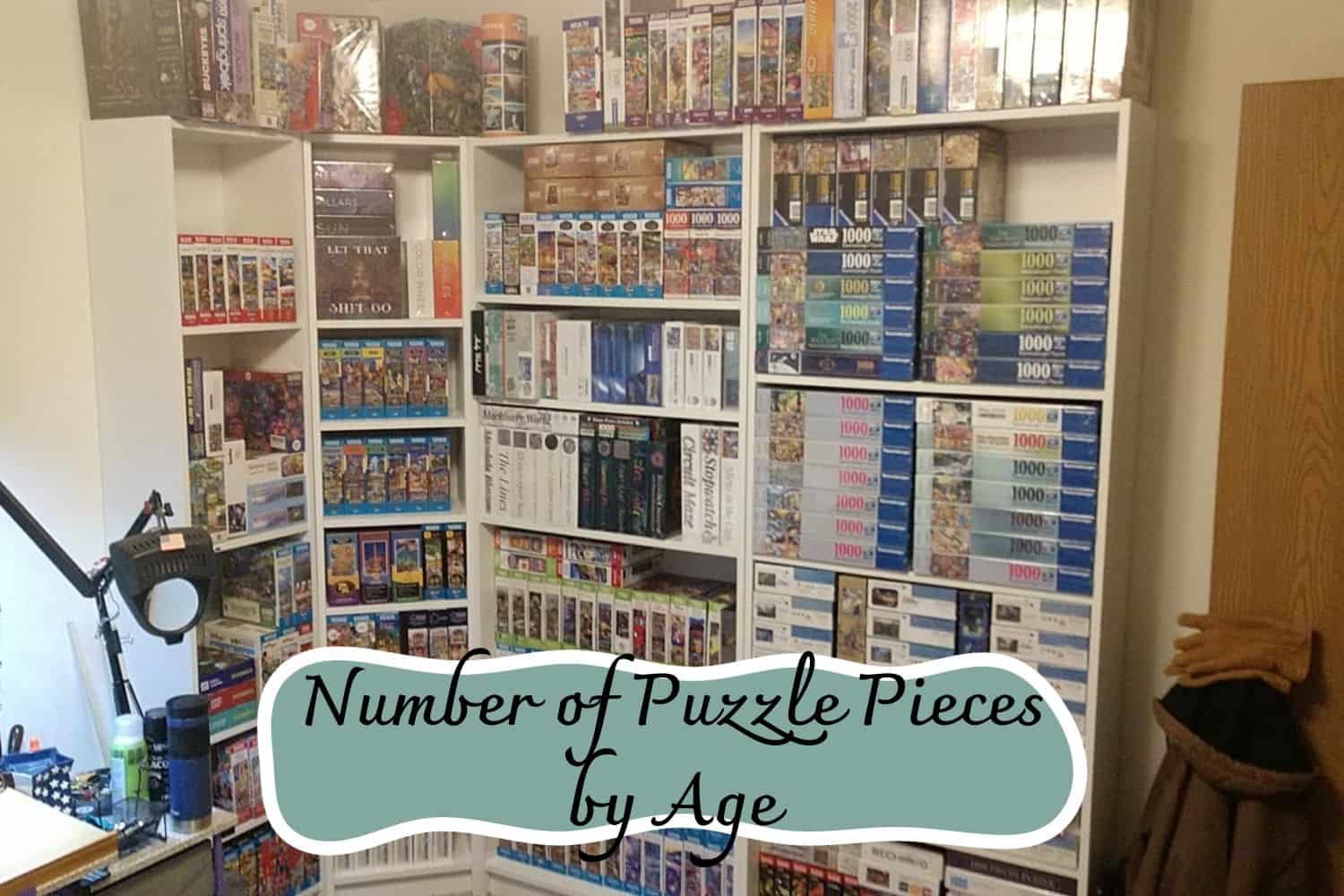Are you ready to take on a puzzle project with your little one? Here’s our breakdown of the number of puzzle pieces by age to help get you started!
Appropriate Number of Puzzle Pieces by Age
Do you ever find yourself needing something to occupy your mind or distract it from the stresses of life? Puzzles are an excellent way to keep your brain engaged and entertained.
They come in many shapes, sizes, and levels of difficulty, so there’s something for everyone – regardless of age! But have you ever wondered how different puzzle pieces are recommended by age group?
In this blog post, we’ll dive into the recommended number of puzzle pieces by age and skill level. We’ll also discuss why puzzles can be beneficial both mentally and emotionally with advice on how best to enjoy them. So let’s take a look at all that jigsaw fun awaits!
Age Groups and Recommended Number of Puzzle Pieces
When it comes to puzzles, not all pieces are created equal. Different types of puzzles have different numbers and sizes of pieces, and they are often categorized by age group or skill level. Here’s a general breakdown of the recommended number of puzzle pieces by age:
| Puzzle Style | Pieces | Age |
| Peg/Knob | 3-7 pieces | 12-18 months |
| Chunky | 6-10 pieces | 18-24 months |
| Smart Starters | 2-6 pieces | 2-3 years |
| My World | 9-10 pieces | 3-4 years |
| Jigsaw | 12-24 pieces | 4-5 years |
| Jigsaw | 24-48 pieces | 5-6 years |
| Jigsaw | 50-100 pieces | 6-7 years |
| Jigsaw | 100-200 pieces | 7-8 years |
| Jigsaw | 200-400 pieces | 8-9 years |
| Jigsaw | 400-500 pieces | 9-10 years |
| Jigsaw | 500+ pieces | 10+ years |
Note: These are just general recommendations and can vary depending on the child’s skill level and puzzle type. Don’t be afraid to try a more challenging puzzle with your child if you think they are ready for it!
Understanding Puzzle Pieces and Difficulty Levels
Typically, the number of puzzle pieces ranges from 2-1000 or more! These numbers can be quite overwhelming when trying to find the right one for you or your child. So let’s break down the different types of puzzles and their corresponding difficulty levels:
Large Piece Puzzles (2-25 pieces)
These puzzles are usually recommended for ages 1-3 and are perfect for tiny fingers learning to grasp and manipulate objects. They can also be beneficial for older individuals with motor skill limitations.
Small Piece Puzzles (26-99 pieces)
These puzzles are recommended for ages 3-6 and are best suited for younger children who have mastered basic puzzle skills like matching colors and shapes. They also help develop hand-eye coordination and fine motor skills.
Medium Piece Puzzles (100-300 pieces)
These puzzles are recommended for ages 6-10 and offer a bit more of a challenge with smaller pieces and more complex designs. They are great for developing problem-solving skills and can be enjoyed by older individuals as well.
Large Piece Puzzles (300-1000+ pieces)
These puzzles are recommended for ages 10 and up and offer the highest degree of difficulty. They are perfect for adults looking for a challenge or for children who have mastered all levels of puzzle difficulty. They also provide numerous cognitive benefits such as improved memory, concentration, and critical thinking skills.
Benefits of Puzzles at Different Ages

Puzzles can provide a range of benefits for people of all ages, making them an excellent activity to enjoy together as a family. Here are some of the potential advantages to consider:
- For young children, puzzles can help develop hand-eye coordination, fine motor skills, shape recognition, and problem-solving abilities. They also encourage patience and concentration.
- As children grow older, puzzles can continue to improve their cognitive abilities and critical thinking skills. They may also learn about different themes or subjects through the images on the puzzle.
- For adults and seniors, completing puzzles can help improve memory, decrease stress, and promote relaxation. They also offer a sense of accomplishment and satisfaction when completed.
Conclusion
Puzzles are more than just a fun pastime. They offer a host of benefits for people of all ages, making them an excellent activity to enjoy together as a family. By choosing puzzles with an appropriate number of pieces for your age group, you can maximize the cognitive and emotional benefits they provide.
So go ahead and pick out your next puzzle adventure, because the possibilities are endless! So, let’s dive into that colorful world of jigsaws together and see what amazing feats we can achieve! Happy puzzling!
Thanks for reading our article Number of Puzzle Pieces by Age. If you want to know more information, visit our website here.
Read more:

